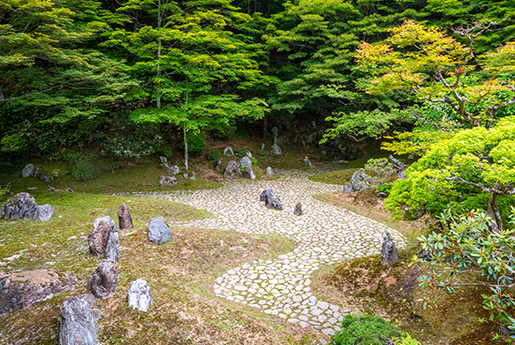


Koyasan Kodaiin Temple, also known as Kouya Omuro (高野御室), was founded around 900 years ago, in 1125, by Imperial Prince Kakuhou, the fourth son of Emperor Shirakawa. This temple is famous for being a place where a member of the imperial family, who later became a monk at Ninnaji Temple (仁和寺) in Kyoto, lived a simple life. Ninnaji Temple has strong connections to Japan's imperial family. Kodaiin Temple belongs to the imperial branch of Omuro Gosho (御室御所) and is located within Koyasan's area. Because of its ties to the imperial family, Kodaiin Temple operates independently from Koyasan's authority and holds the highest status in Mt. Koya. Kodaiin also hosts two national registered monuments designed by Shigemori Mirei(重森三玲), a famous garden designer in Japan in the 1970s.
You may see his work at 117 temples in Koyasan, including eight lovely gardens. Two of them are Kodaiin-Shoin Garden (光臺院書院庭園) and Ryuchitei Garden (龍池庭). A temple complex, known as "garan," consists of four buildings: the main hall, bell tower, scripture repository, and pagoda. On Mount Koya, there are two temples, Kongosanmaiin and Kodaiin, which have all four buildings. Our temple's scripture repository and pagoda were designated as registered tangible cultural properties in July 2024. The scripture repository houses sutras and is a rare kura-zukuri style building on Mount Koya, donated by the Edo-period monk Ryo'o. The pagoda was built to honor Prince Dosho's enlightenment, with its principal image being Dainichi Nyorai (not open to the public).
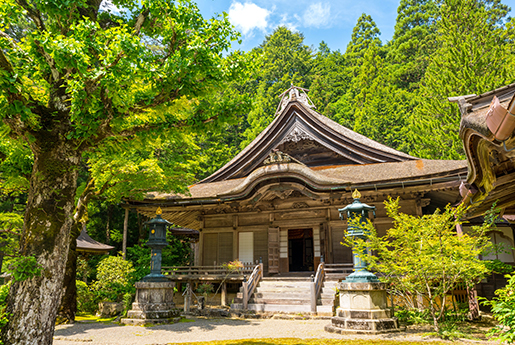
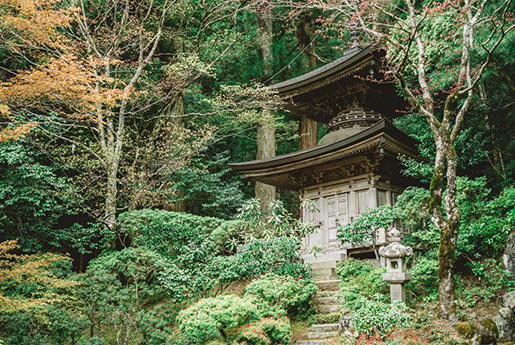
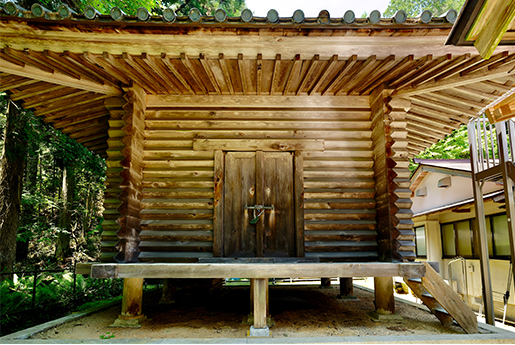
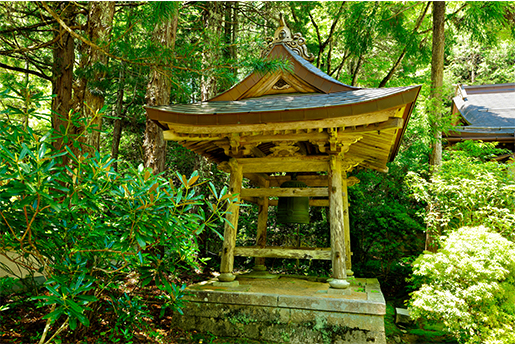
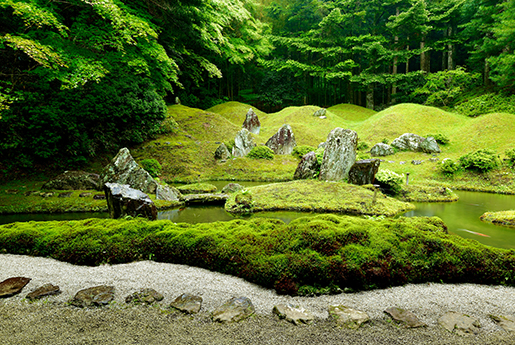
Registered National Monument Since 2017
Kodaiin Shoin Garden (光臺院書院庭園) has been a Registered National Monument since 2017. This garden represents Koyasan's eight hills, which resemble lotus flowers with eight petals, symbolizing the eightfold path of the God of Law. On the left side of the garden, triangular stones resemble a crane, while a small island adjacent to the triangular rock resembles a turtle, symbols of long life. In the center of the pond, there's an island representing Mt. Horai (蓬莱山) in China, a legendary mountain where a hermit was said to have lived long ago.
Registered National Monument Since 2010 Kodaiin Garden (光臺院庭園) is also a Registered National Monument since 2010. This garden, also known as Ryuchitei (龍池庭). The dried-up pond, transformed into the shape of the walkway, resembles a dragon emerging from the sea. The tall rock pillars surrounding the path represent koi fish swimming upstream. Our garden shows off the natural beauty of all four seasons, symbolizing success, good health, and prosperity.
